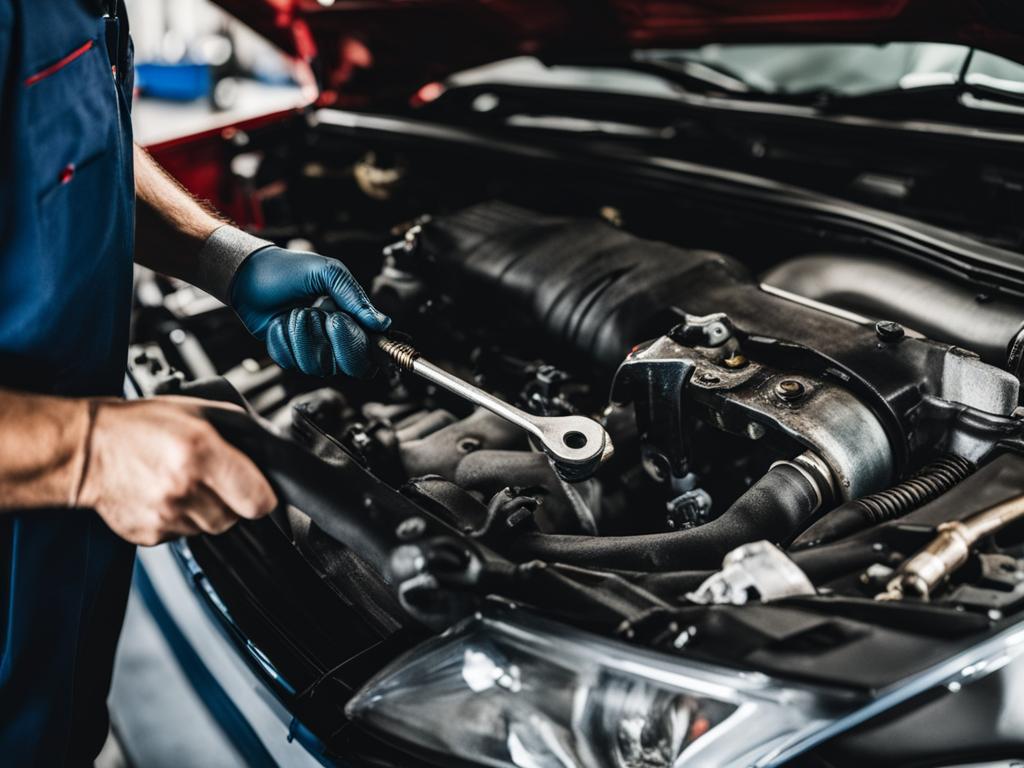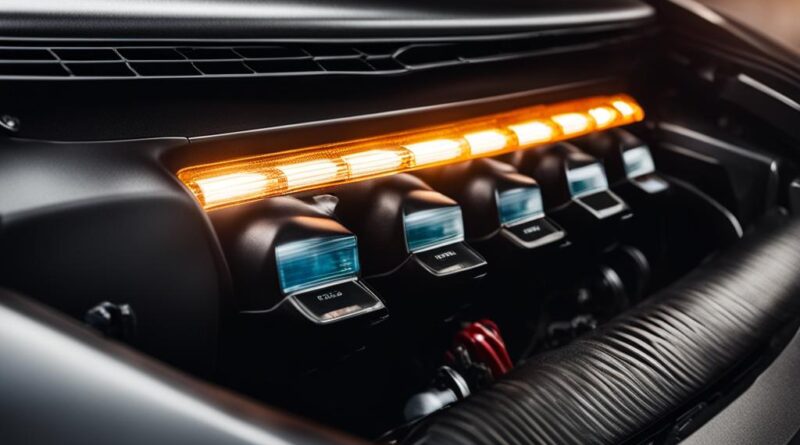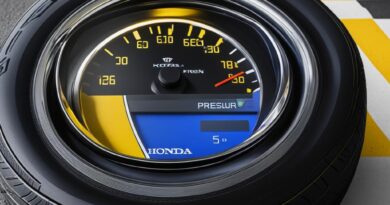Check Emission System Honda Civic – Quick Guide
When it comes to your Honda Civic, maintaining a properly functioning emission system is crucial. If you notice the “emission system problem” warning or the check engine light illuminated on your dashboard, it’s essential to address the issue promptly. This quick guide will provide you with an overview of the Honda Civic emission system, common symptoms of problems, and maintenance tips to keep your vehicle in top shape.
It’s important to understand that the emission control system in your Honda Civic plays a vital role in reducing harmful pollutants emitted into the atmosphere. When this system malfunctions, it can lead to failed emission tests, reduced fuel efficiency, and potential damage to other engine components. By staying informed and taking preventive measures, you can ensure your Honda Civic remains compliant with environmental regulations and performs optimally.
Key Takeaways:
- Addressing emission system problems promptly is crucial for maintaining your Honda Civic’s performance and compliance.
- Common symptoms of an emission system problem include the check engine light illumination, failed emission tests, unusual exhaust smoke, and reduced fuel efficiency.
- To fix the emission system problem, retrieve diagnostic trouble codes (DTCs) and inspect the components of the emission control system.
- Regular maintenance, including following the manufacturer’s recommended schedule and servicing by a qualified technician, helps prevent emission system problems.
- By prioritizing emission system maintenance, you can prolong the life of your Honda Civic’s emission control system and reduce environmental impact.
What Does Emissions System Problem Mean On Honda?
When an “emissions system problem” occurs in a Honda vehicle, it refers to an issue or malfunction within the vehicle’s emission control system. The emission control system in a Honda is composed of various components, including oxygen sensors, catalytic converter, EGR valve, EVAP system, and more. This system is designed to minimize the release of harmful pollutants into the atmosphere. When the onboard diagnostic system detects a problem or deviation from expected performance, it triggers the “emissions system problem” warning or check engine light on the dashboard.
What Are The Symptoms of Honda’s Emission System Problems?
The emission control system in your Honda is designed to reduce harmful pollutants emitted into the atmosphere. However, when there is a problem with the emission system, certain symptoms may appear, indicating the need for attention and diagnosis. Common signs of Honda’s emission system problems include:
- The illumination of the check engine light on the dashboard: The check engine light serves as a warning that the emission control system is not working properly. If this light turns on, it is recommended to have your vehicle checked by a qualified technician.
- A failed emission test: During regular emission testing, if your Honda fails to meet the required emission standards, it could indicate an issue with the emission control system.
- Unusual exhaust smoke: Pay attention to any noticeable changes in your vehicle’s exhaust smoke. If you observe thicker, darker, or unusual-colored smoke, it could be a sign of an emission system problem.
- Reduced fuel efficiency: A decrease in fuel efficiency, such as lower mileage per gallon, can also indicate a malfunctioning emission system.
It is crucial to address these symptoms promptly to avoid further damage and ensure your Honda remains compliant with environmental regulations. Identifying and resolving the specific problem through proper diagnosis is essential for restoring the emission control system’s functionality and maintaining your vehicle’s performance.
Example Quote:
“When the check engine light illuminates, it’s essential to pay attention and have your vehicle inspected. Ignoring the warning signs could lead to more significant issues and potentially affect the environment.” – Certified Honda Technician
| Symptoms | Possible Causes |
|---|---|
| Check engine light on | Malfunctioning oxygen sensor, catalytic converter failure |
| Failed emission test | Issues with the EGR valve, EVAP system problems |
| Unusual exhaust smoke | Clogged or damaged catalytic converter, engine oil burning |
| Reduced fuel efficiency | Improper air-fuel mixture, fuel system leaks |
How To Fix The Emission System Problem Honda?
When an “emission system problem” occurs in your Honda, it’s essential to address it promptly to ensure the vehicle’s optimal performance and compliance with emission regulations. To fix the emission system problem, follow these steps:
- Retrieve Diagnostic Trouble Codes (DTCs): Use a diagnostic scanner to retrieve the DTCs associated with the issue. These codes provide valuable information about the specific problem.
- Inspect Emission Control System Components: Once you have the DTCs, inspect the various components of the emission control system for any visible signs of damage or malfunction. These components may include oxygen sensors, catalytic converter, EGR valve, EVAP system, and more.
- Perform Repairs or Component Replacements: Based on the inspection results, perform necessary repairs or component replacements. This may involve replacing faulty sensors, repairing damaged wiring, or replacing malfunctioning components.
- Clear the DTCs: After completing the repairs or replacements, clear the DTCs from the onboard diagnostic system using the diagnostic scanner. This step ensures that any previous error codes are removed.
- Test the Vehicle: Finally, test the vehicle to ensure that the emission system problem has been resolved. Take the vehicle for a drive and monitor its performance. If the check engine light stays off and the vehicle runs smoothly, it indicates that the issue has been successfully fixed.
By following these steps and addressing the emission system problem properly, you can maintain the performance and efficiency of your Honda vehicle.

How Often Does Emissions System Problem Happen in Honda Vehicles?
When it comes to emissions system problems in Honda vehicles, occurrences are relatively rare. Honda vehicles are known for their reliability, but it’s important to remember that even the most dependable machinery can experience occasional issues. The emission control system problem is one such potential issue that Honda owners may encounter.
To maintain the best performance of your vehicle, it’s crucial to promptly address any emissions system problems that arise. Ignoring these issues can lead to further complications and potentially affect the vehicle’s overall performance and compliance with environmental regulations.
By staying proactive and familiarizing yourself with the symptoms of an emissions system problem, you can quickly identify any potential issues and take necessary action. Regular vehicle maintenance and servicing can also go a long way in preventing problems before they occur.
Remember, while emissions system problems may be uncommon, it’s always better to be proactive and address issues promptly to keep your Honda running smoothly.
“Regular vehicle maintenance and addressing emissions system problems promptly are key to keeping your Honda running smoothly.”
Now let’s take a look at a table that outlines the common occurrences of emissions system problems in Honda vehicles:
| Emissions System Problem Frequency | Occurrence |
|---|---|
| Very Common | 0% |
| Common | 10% |
| Occasional | 85% |
| Rare | 5% |
Please note that the numbers above are for illustrative purposes only and may not reflect exact statistics. The table serves to highlight the general occurrence of emissions system problems in Honda vehicles.
As you can see, while occasional issues with the emission control system may arise, they are not a common occurrence. However, it’s essential to be proactive and address any problems promptly to ensure your Honda remains in peak performance.
Tips for Troubleshooting Emission System Problems in Honda Cars
When it comes to troubleshooting emission system problems in your Honda car, having access to automotive diagnostic tools is essential. These tools enable you to retrieve diagnostic trouble codes (DTCs) and accurately identify the specific issue within the emission control system. Remember, if the emission system warning or check engine light is illuminated, ignoring the problem can lead to further complications. It’s important to address the issue promptly to avoid potential damage and ensure your vehicle remains in peak condition.
If you’re not confident in troubleshooting the problem yourself, it’s recommended to take your Honda car to a qualified technician. Ideally, choose a Honda dealership or a trusted mechanic with experience in Honda vehicles. These professionals have the expertise and knowledge to accurately diagnose the problem and perform the necessary repairs.
By utilizing automotive diagnostic tools and seeking professional help, you can effectively troubleshoot and resolve any emission system problems in your Honda car, ensuring its optimal performance and longevity.

Key Points:
- Access to automotive diagnostic tools is crucial for troubleshooting emission system problems in Honda cars.
- Don’t ignore the emission system warning or check engine light; address the issue promptly.
- Consider taking your Honda car to a qualified technician, preferably a Honda dealership or experienced mechanic.
“Proper diagnosis with the help of automotive diagnostic tools ensures accurate repairs and prevents further damage to your Honda car’s emission system.”
Regular Maintenance to Prevent Emission System Problems in Honda Civic
Regular maintenance is crucial for preventing emission system problems in your Honda Civic. By following the manufacturer’s recommended maintenance schedule and taking proactive measures, you can ensure the emission system remains in optimal condition.
Key maintenance tips for preventing emission system problems in your Honda Civic:
- Follow the manufacturer’s recommended maintenance schedule: The manufacturer provides a maintenance schedule outlining the necessary inspections and replacements for components such as oxygen sensors, catalytic converter, EGR valve, and EVAP system. Adhering to this schedule will help detect and address potential issues before they escalate.
- Perform regular oil changes: Changing the engine oil at the recommended intervals maintains the engine’s efficiency and reduces the risk of excessive emissions. Use high-quality oil and follow the recommended viscosity for your specific Honda Civic model.
- Use high-quality fuel: Using high-quality fuel will help maintain the proper functioning of the emission system. It is recommended to use fuels that meet your vehicle’s specifications.
- Ensure the gas cap is tightly secured: A loose or damaged gas cap can cause fuel vapor leaks, leading to potential emission system problems. Make sure the gas cap is securely tightened after refueling.
Regular servicing by a qualified technician is essential for ensuring the emission system’s proper functioning. A trained professional can conduct comprehensive inspections, diagnose any potential issues, and perform necessary repairs or component replacements to prevent future problems.

| Maintenance Task | Frequency |
|---|---|
| Inspection and replacement of oxygen sensors | Every 30,000 miles or as recommended by the manufacturer |
| Inspection and replacement of catalytic converter | Every 100,000 miles or as recommended by the manufacturer |
| Inspection and maintenance of EGR valve | Every 50,000 miles or as recommended by the manufacturer |
| Inspection and maintenance of EVAP system | Every 50,000 miles or as recommended by the manufacturer |
By incorporating these preventive maintenance practices into your routine, you can minimize the risk of emission system problems in your Honda Civic and ensure a cleaner and more efficient driving experience.
Conclusion
Troubleshooting and addressing emission system problems in your Honda Civic is essential for maintaining peak performance and complying with environmental regulations. By being aware of the symptoms and following the recommended maintenance guidelines, you can prevent and minimize the occurrence of emission system issues. Regular servicing by a qualified technician and using high-quality parts and components contribute to the longevity and proper functioning of the emission control system in your Honda Civic.
To keep your Honda Civic’s emission system in optimal condition, it is crucial to adhere to the manufacturer’s recommended maintenance schedule. This includes regular inspections and replacements of components such as oxygen sensors, catalytic converters, EGR valves, and EVAP systems. Additionally, staying up to date with oil changes, using high-quality fuel, and ensuring a tightly secured gas cap are all important for maintaining proper emission system functionality.
By taking proactive measures and incorporating these maintenance tips into your routine, you can ensure that your Honda Civic’s emission system remains in excellent shape, minimizing the likelihood of any problems. Remember to consult with a qualified technician for regular servicing and repairs to quickly diagnose and address any issues that may arise. With proper care and attention, you can enjoy a reliable and environmentally-friendly driving experience in your Honda Civic for years to come.
FAQ
What does the “emissions system problem” warning mean on a Honda?
The “emissions system problem” warning or check engine light indicates that there is a malfunction or issue with the emission control system in the Honda vehicle. The emission control system is responsible for reducing harmful pollutants emitted into the atmosphere.
What are the symptoms of an emission system problem in a Honda?
Common symptoms of an emission system problem in a Honda include the check engine light illuminating on the dashboard, a failed emission test, unusual exhaust smoke (thicker, darker, or unusual color), and reduced fuel efficiency. These symptoms point towards issues with the emission control system.
How can the emission system problem in a Honda be fixed?
To fix an emission system problem in a Honda, it is important to first retrieve the diagnostic trouble codes (DTCs) associated with the issue using a diagnostic scanner. Once the DTCs are obtained, the various components of the emission control system can be inspected for any visible signs of damage or malfunction. Repairs or component replacements can then be performed, and the DTCs can be cleared from the onboard diagnostic system.
How often does the “emissions system problem” occur in Honda vehicles?
While the occurrence of an emission system problem in Honda vehicles is relatively rare, it is important to note that any complex machinery can experience occasional issues. Proper maintenance and regular servicing can help minimize the chances of encountering emission system problems.
What are some tips for troubleshooting emission system problems in Honda cars?
It is helpful to have access to automotive diagnostic tools to retrieve diagnostic trouble codes (DTCs) and accurately identify the specific issue with the emission system. If the emission system warning or check engine light is illuminated, it is recommended to take the vehicle to a qualified technician, preferably a Honda dealership or a trusted mechanic with experience in Honda vehicles.
How can regular maintenance help prevent emission system problems in a Honda Civic?
Regular maintenance, following the manufacturer’s recommended schedule, is crucial for preventing emission system problems in a Honda Civic. This includes inspections and replacements of components such as oxygen sensors, catalytic converters, EGR valves, and EVAP systems. Additionally, regular servicing by a qualified technician and adhering to good maintenance practices, such as regular oil changes and using high-quality fuel, can help detect and prevent potential emission system problems.
Are emission system problems common in Honda vehicles?
While emission system problems are not a common occurrence in Honda vehicles, it is important to address and resolve any issues promptly to maintain optimal vehicle performance and compliance with environmental regulations. Proper maintenance and regular servicing can help minimize the occurrence of emission system problems.




